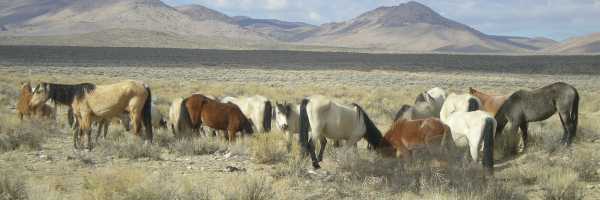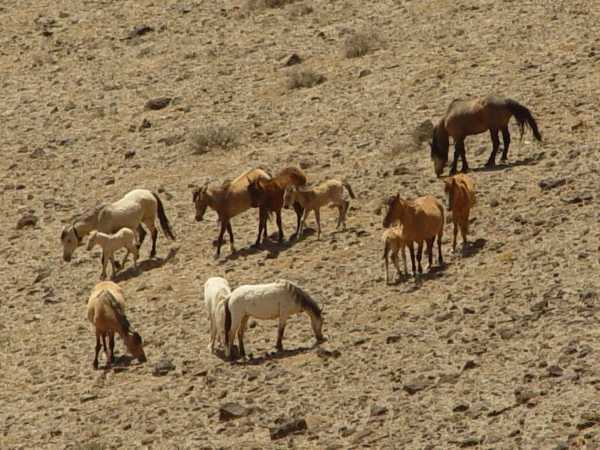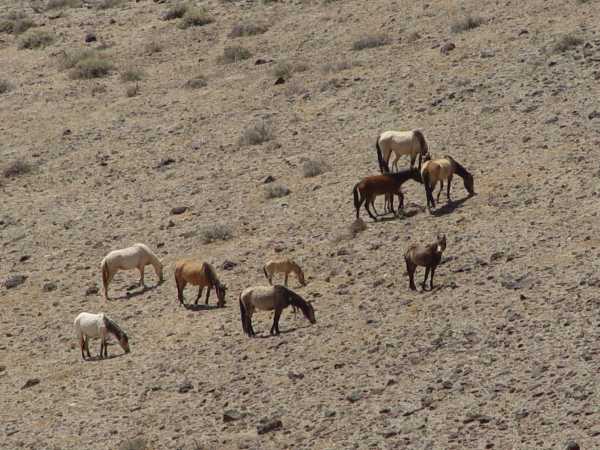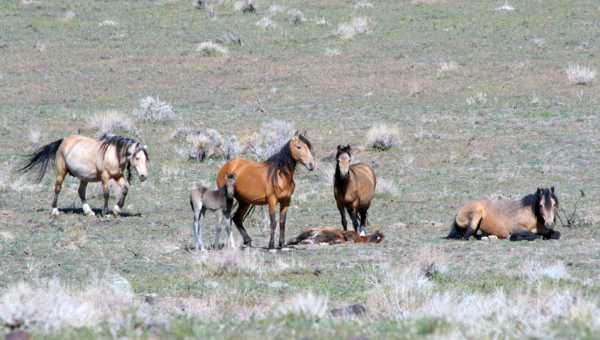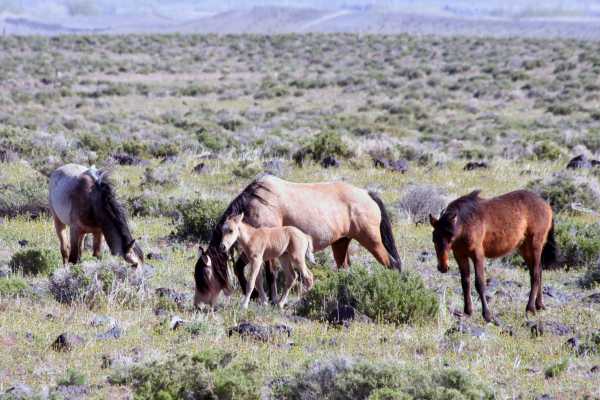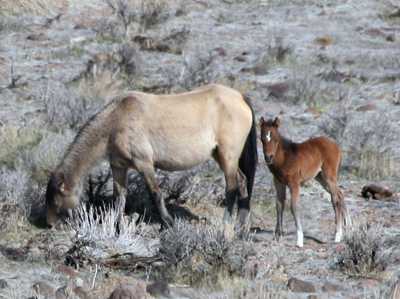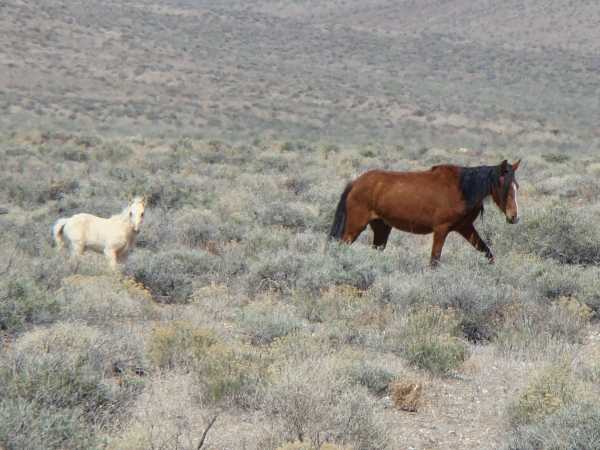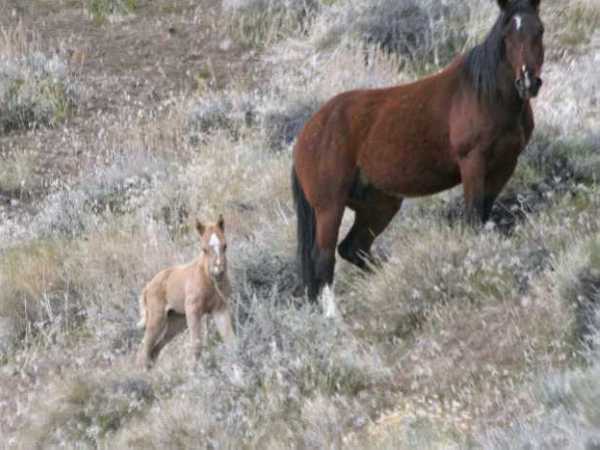|
(This feature is a continuation of Part One.) We soon discovered two things. From this point on the successive generations of horses were undergoing most interesting color changes. And, tourists from all over the world were coming out to see these horses.
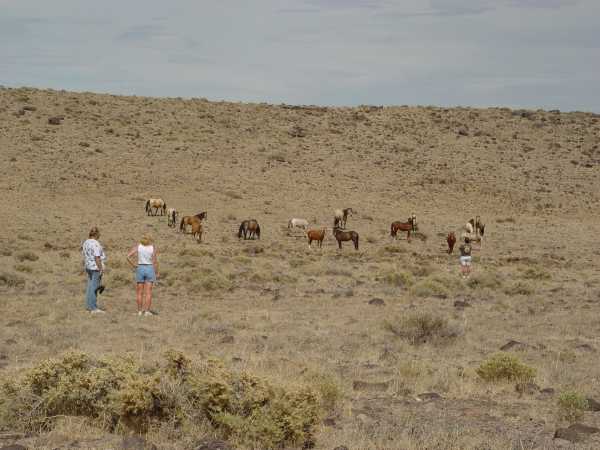
We took numerous photos of the various generations and their color variations and sent the material to Dr. Phil Sponenberg at Texas A&M University. Dr. Sponenberg is an expert in wild horse genetics. Dr. Sponenberg's opinion (without knowing about the presence of Sentinel and the roans) was that we were seeing the effects of "double dilute buckskin" with the presence of the roan gene. The actual color of offspring would depend on specifically which genes were passed on, however the trend would involve a gradual lightening of horse colors from typical buckskin, to a more cream colored haircoat with black points and bicolored black mane and tail, to a cream colored horse that still had the dark amber "buckskin" eye color, and in some instances eventually a cream colored horse with lighter pigmented skin and blue eyes.
Some mares with a more bay appearance could have buckskin or grulla foals.
|
